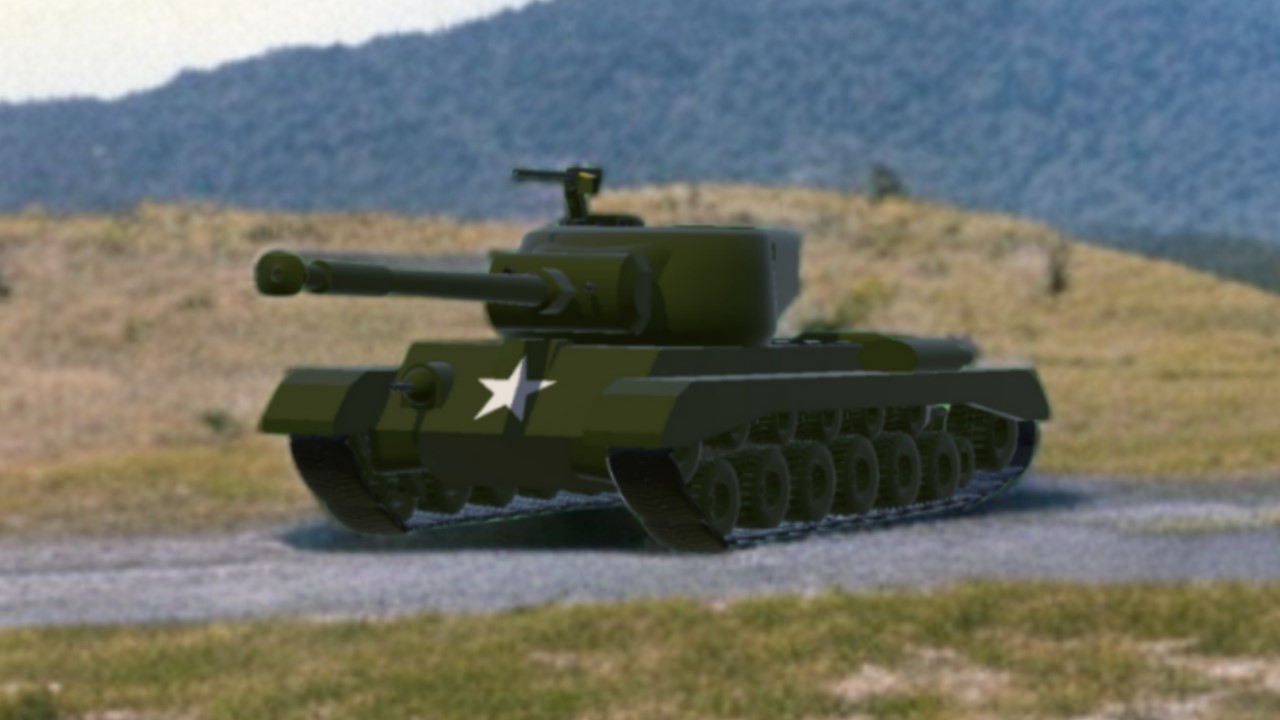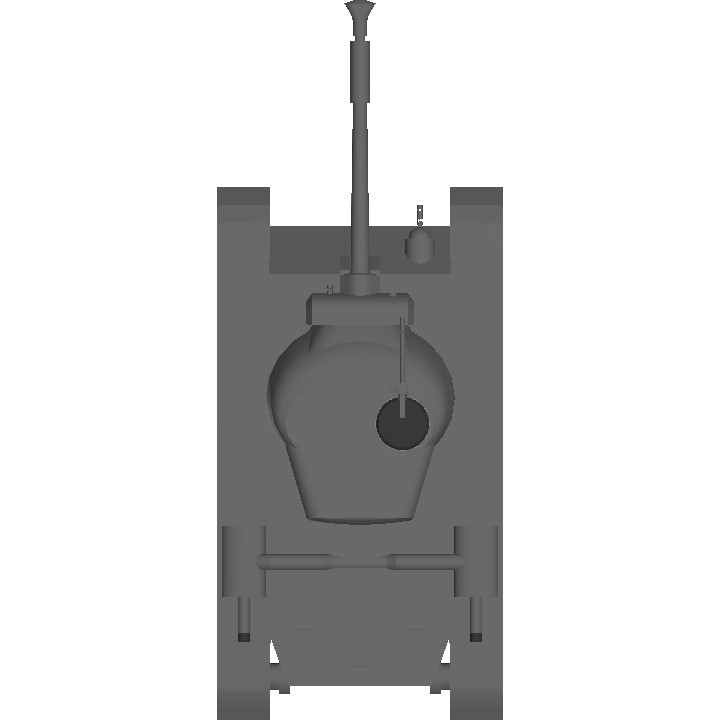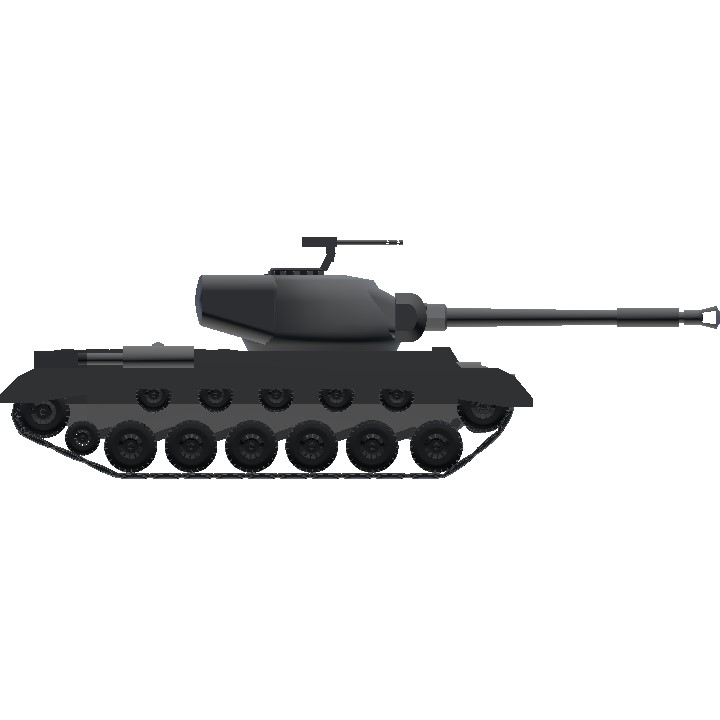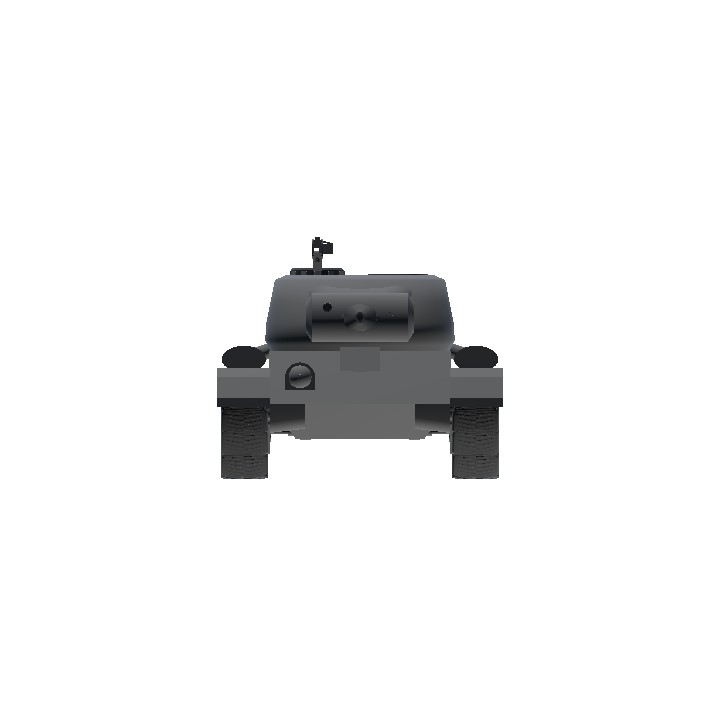Instructions
AG1-Arm Hull MG
AG2-Arm Roof HMG
History
The M46 Patton was an American main battle tank developed during the late 1940s as a successor to the M26 Pershing and an interim design before the introduction of the M47 and M48 Patton tanks. It was named after General George S. Patton, one of the most prominent tank commanders of World War II. The M46 was introduced in 1949 and served as the United States Army's primary tank during the early years of the Korean War, providing much-needed improvements over the M26 in terms of mobility and reliability.
The M46 Patton was essentially an upgraded M26 Pershing, designed to address the shortcomings of its predecessor, particularly its underpowered engine and insufficient armor. It was never widely exported, with the majority of the production serving with U.S. forces. By the mid-1950s, the M46 was gradually replaced by the M47 Patton and phased out of frontline service.
Gun

The M46 Patton was armed with the 90mm M3A1 cannon, which was an improved version of the gun found on the M26 Pershing. The M3A1 featured a longer barrel and a muzzle brake to reduce recoil. It could fire a variety of ammunition types, including:
AP
(Armor-Piercing) rounds for engaging enemy tanks.
HVAP
(High-Velocity Armor-Piercing) rounds, which provided increased penetration against heavily armored targets.
HE
(High-Explosive) shells for use against infantry and soft targets.
The gun was equipped with a gyrostabilizer, allowing for more accurate fire on the move, although this feature was not as advanced as those in later tank designs. The M46 also had a coaxial 7.62mm machine gun and a .50 caliber M2 Browning heavy machine gun mounted on the turret roof for anti-aircraft and infantry suppression roles.
Engine

The M46 Patton was powered by the Continental AV-1790-5B engine, a V12 air-cooled gasoline engine producing 810 horsepower. This engine was a significant upgrade over the underpowered Ford GAF engine of the M26 Pershing. Coupled with the General Motors CD-850-1 cross-drive transmission, the M46 achieved a maximum road speed of 48 km/h (30 mph) and greatly improved mobility in comparison to its predecessor.
The upgraded powertrain allowed the M46 to traverse rugged terrain more effectively, making it better suited for the Korean War's hilly landscapes. However, the gasoline engine was prone to catching fire when hit, a vulnerability shared by many tanks of the era.
Armor
The M46 Patton featured cast and welded steel armor, with thickness varying between 25mm to 102mm. While adequate for its time, the armor was not as robust as that of some contemporary Soviet tanks, such as the T-54. To improve survivability, the tank incorporated sloped armor, which increased the effective thickness against incoming rounds.
Other Features
Crew: The M46 had a crew of five, including a commander, gunner, loader, driver, and bow machine gunner.
Weight: The tank weighed approximately 48 tons, making it heavier than the M26 Pershing but still more mobile.
Operational Range: The M46 had an operational range of about 130 km (81 miles) on roads, limited by its high fuel consumption.
Korean War Performance: The M46 Patton proved effective against North Korean T-34/85 tanks and played a critical role in the U.S. Army's tank operations. However, its reliance on a gasoline engine and moderate armor led to some vulnerabilities in prolonged engagements.
Legacy
The M46 Patton was a transitional design that helped the U.S. Army bridge the gap between World War II-era tanks and more advanced designs of the Cold War. While it was soon replaced by the M47 and M48 Patton tanks, the M46 provided valuable experience in tank design and combat, influencing future generations of armored vehicles.
Specifications
Spotlights
- SILVERPANZER 22 days ago
- KPLBall 22 days ago
- overlord5453 22 days ago
- WritersCrusadersAirCo2 22 days ago
General Characteristics
- Successors 1 airplane(s) +21 bonus
- Created On Android
- Wingspan 13.2ft (4.0m)
- Length 33.3ft (10.1m)
- Height 11.2ft (3.4m)
- Empty Weight 33,745lbs (15,306kg)
- Loaded Weight 49,425lbs (22,419kg)
Performance
- Wing Loading N/A
- Wing Area 0.0ft2 (0.0m2)
- Drag Points 8522
Parts
- Number of Parts 270
- Control Surfaces 0
- Performance Cost 2,629





@WizNick The M46 Patton was also capable of firing a M348 HEATFS round
@WizNick oh, ok
@KPLBall after more research, I've found that the ammo capacity was 30 rounds initially, 20more in storage. I'm not sure about the 10round burst. Also the hulls don't match. Needs to be modified to be faithful to the blueprint. it's called the ARRL.
8/10
Would blow up commies again
@WizNick Yeah, I don’t mind
@WizNick ye
Nice
@DrakonDynamics you mind if I make the SPAA with these tracks?
@KPLBall the variant that you asked me to build was the revolving rocket artillery unit correct?